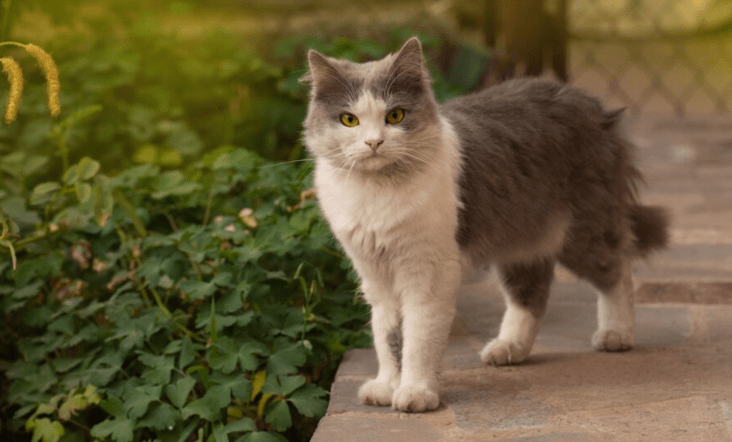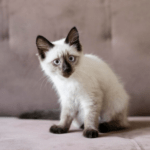Welcome to the enchanting world of Ragdoll cats, where grace and elegance meet a touch of mystery. If you’ve ever come across these fascinating felines, you may have noticed something quite extraordinary about them, they possess an uncanny ability to go limp in your arms like a cuddly plush toy. It’s as if their bones turn into jelly, leaving you wondering how they manage to maintain such a relaxed state amidst all the attention and affection lavished upon them. Join us on this journey as we unravel the enigma behind their unique behavior and explore the factors that contribute to their captivating limpliness. Prepare for a delightful adventure into the world of Ragdoll cats.
Distinctive Traits: Exploring Ragdoll Cats’ Unique Limpness
Step into a room filled with Ragdoll cats, and you’ll immediately notice their distinctive trait, the remarkable ability to go completely limp in your arms. It’s as if they surrender all tension and simply melt into your embrace, leaving you both bewildered and captivated.
This enchanting behavior sets them apart from other cat breeds, making them truly one-of-a-kind companions. But what exactly causes this seemingly magical transformation?
Genetics plays a significant role in shaping the temperament of these magnificent creatures. The breed was developed by Ann Baker in the 1960s by selectively breeding cats with traits that exhibited this extraordinary limpness. Through careful selection, she cultivated a line of felines known for their relaxed disposition.
However, genetics alone cannot explain everything. Environmental factors also contribute to the development of their distinctive behavior. Growing up in a calm and loving environment can further enhance their natural inclination towards being limber and easygoing.
But perhaps one of the most influential factors is human interaction. Ragdolls are highly social cats who thrive on affectionate bonds with their owners. Regular handling and gentle touch from an early age can reinforce their tendency to go limp when held or cuddled.

Behavioral Wonders: Understanding the Mystery of Limp Ragdoll Cats
When it comes to Ragdoll cats, one cannot help but be fascinated by their unique behavior. One of the most distinctive traits of these beautiful felines is their limpness when picked up or held. It’s as if they become completely relaxed and go into a state of blissful surrender.
But what exactly causes this mysterious limpness? Is it something genetic, or perhaps influenced by their environment? The truth is, there isn’t a simple answer. Like any complex behavior, multiple factors are likely at play.
One theory suggests that the genetics behind Ragdolls may contribute to their relaxed nature. These cats were first bred in California in the 1960s, with specific breeding goals centered around producing gentle and docile companions. This intentional selection for calm temperament could explain why Ragdolls display such a unique behavior.
On the other hand, environmental factors also play a role in shaping a cat’s behavior. If a Ragdoll grows up in a peaceful and loving home where they feel safe and secure, they are more likely to exhibit their characteristic limpness. Conversely, if they experience stress or fear from an early age, this could affect their overall demeanor.
Let’s not forget about human influence. As social creatures, cats can pick up on our emotions and behaviors. If we interact with them gently and provide positive reinforcement for calm behavior, it reinforces their inclination towards relaxation when being handled.
Genetic Influences: Delving into the Origins of Ragdoll Cat Behavior
One intriguing aspect of Ragdoll cats is their unique behavior, characterized by a relaxed and limp demeanor. This distinctive trait has fascinated cat lovers for decades, prompting many to wonder about its origins. Could it be purely genetic?
Studies have shown that genetics indeed play a significant role in shaping the behavior of Ragdolls. These charming felines possess specific genes that contribute to their docile nature and propensity for relaxation. The exact mechanisms behind these genetic influences are still being explored, but researchers believe they involve certain neurotransmitters and hormones.
The origins of this fascinating behavior can be traced back to one remarkable feline named Josephine. In the 1960s, a breeder named Ann Baker developed the breed using various long-haired cats with gentle temperaments. By selectively breeding those with desired traits, such as floppy limbs and sociability, she established what we now know as the Ragdoll breed.
Over time, these desirable characteristics became ingrained in their genetic makeup through careful breeding practices. Today’s Ragdolls inherit not only their stunning physical attributes but also their laid-back personalities from their ancestors.
Interestingly, while genetics lay down the foundation for Ragdoll’s cat behavior, environmental factors can also influence how it manifests itself in each cat. Factors like socialization during kittenhood and exposure to different environments can shape a Ragdoll’s personality over time.
Environmental Factors: How Surroundings Impact Ragdoll Cat Limpness
Ragdoll cats are known for their relaxed and floppy nature, but have you ever wondered how their surroundings affect this unique behavior? It turns out that the environment plays a significant role in shaping a Ragdoll cat’s limpness.
Let’s consider the importance of a calm and stress-free environment. Ragdolls thrive in peaceful settings where they can feel safe and secure. Loud noises, chaotic households, or constant disruptions can disrupt their tranquility and potentially make them less inclined to display their trademark limp behavior.
It is important for owners to provide plenty of opportunities for mental stimulation within the home environment. Interactive toys, scratching posts, and perches allow these intelligent felines to engage both physically and mentally – promoting overall contentment and reinforcing their naturally laid-back nature.
Understanding how environmental factors impact a Ragdoll cat’s limp behavior helps us create an optimal setting for our feline friends’ well-being. By providing them with a calm atmosphere filled with creature comforts tailored specifically for them, we can ensure that these wonderful cats continue delighting us with their unique personality traits!
Owner Interaction: Unraveling the Role of Human Influence in Ragdoll Cat Behavior
Now that we’ve explored the distinctive traits, behavioral wonders, genetic influences, and environmental factors behind the mysterious limpness of Ragdoll cats, it’s time to delve into an essential aspect – owner interaction. While genetics and surroundings play a significant role in shaping a Ragdoll cat’s behavior, human influence cannot be underestimated. Ragdolls are known for their affectionate nature and their ability to form deep bonds with their owners. These gentle felines thrive on attention and love nothing more than being doted upon by their human companions. The way you interact with your Ragdoll cat can greatly impact its overall behavior, including its signature limpness.
It is crucial to establish a loving and nurturing relationship with your Ragdoll from the moment they enter your home. Spend quality time playing with them using interactive toys or engaging in gentle petting sessions that allow them to relax completely.
In conclusion (without using those words), unraveling the mystery behind the limp behavior of Ragdoll cats involves considering various factors such as their distinctive traits influenced by genetics along with environmental factors like comfort levels within their surroundings. However important yet often overlooked is our role as owners, our interaction, and the love we provide significantly shape their behavior.


